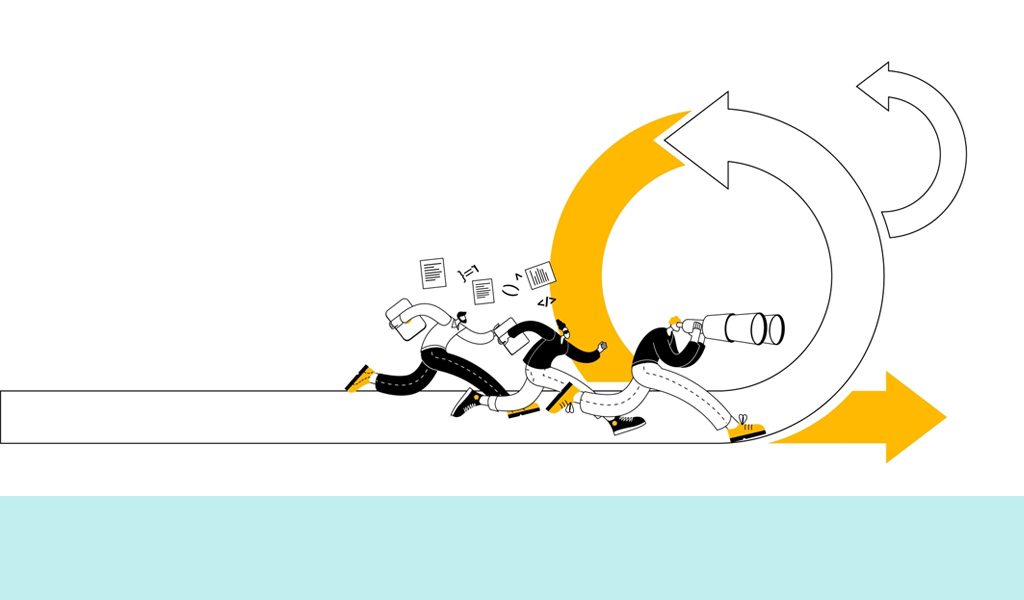
You’ll often hear actors, entertainers, stand-up comedians, and bands use the line, “It took us years of hard work to become an overnight success.”
Rapid research is a bit like that. While it feels like a relatively new addition to UX research, it’s been building in the background for longer than you’d think, developing as the demands of our industry become more immediate and more decision-making is done through data and research and no longer left to chance. With technology moving faster than ever, the competition more dynamic, and the smallest percentage gains translating into millions of dollars, fast and efficient processes are definitely essential to today’s practices.
So, when designers, developers, stakeholders, and everyone else working on the project have questions that need answering yesterday, do we have a system ready to hit the ground running and deliver the data behind those answers in record time?
We do now. Welcome to rapid UX research.
Rapid research definition:
A rapid research program is a standalone, lightweight process that explores and delivers quick feedback on a preset research topic chosen by the designers, researchers, or stakeholders.
In other words, a rapid research program is quick (often a week but rarely longer than a fortnight), based on defined questions and criteria, built on a tight, templated, and compact schedule (so that everything from the project definition to delivering its stripped-down findings is efficiently contained), and ready to go with whatever its next demand is in record time.
What makes a rapid research framework different from traditional UX research sprints?
With existing agile processes working in sprint sessions to drive faster product development, haven’t we already got a method to gather those quick research insights rapid research is designed to deliver?
Well, rapid research projects (and a couple of closely related practices) deliver a UX research practice that takes that idea and runs with it. However, it goes a considerable step further, providing researchers, designers, and stakeholders with a quick feedback system for data-driven decisions that just can’t wait.
Often, agile processes become too focused on the product or feature instead of what’s at the heart of UX research—its users. Rapid UX research, while being as evaluative as the product developers need it to be for the product or feature, focuses on users’ performance, reactions, and concerns despite its small participant pool. Whatever the user research teams learn can be fed back into the mix, creating a backdoor of generative research many agile sprints miss out on.
Understanding user needs
Delivering high-quality insights without extended timeframes relies on interactions and interviews that get straight to the heart of the matter. Questionnaires are targeted and concise, and observational studies are quick to perform yet provide clear and immediate insights into real users’ needs.
Given the time shortage, participant recruitment must also be organised, fast, and effective, creating a small but relevant pool most likely to deliver the required data.
Effective testing methods and tools
As with the rolling research process and continuous discovery research process, there are common grounds between these three somewhat similar practices.
First, sticking to strict schedules is essential.
Second, having well-defined, adaptable templates for every script, stage, and practice will simplify practitioner efforts, while automating as many tasks as possible will keep everything moving at a swift and streamlined pace. This bank of templates is crucial for further research cycles and for bringing junior researchers on board to carry out suitable operations with limited input from a more advanced user researcher.
Short-form interviews, simple questionnaires, and A/B testing all suit the process (but are by no means an exhaustive list), delivering valuable insights in the least amount of time. Keeping studies structured and consistent is key, with qualitative data delivery far more suited to this style of research sessions.
Speed-driven synthesis
An effective rapid research program requires more than organizing participant recruitment and delivering tests. Data holds the gold of our research operations, so it’s crucial to identify the key themes through our rapid feedback evaluations. Thankfully, technology is on the research teams’ side regarding data analysis, with many real-time and automated analysis tools and analytical predictive data models available for identifying key metrics, patterns, and anomalies.
For further efficiency of analysis, automate data extraction (with AI-powered translation and transcription tools) and apply widespread knowledge sharing throughout the organisation via existing, most effective communication channels and a well-structured research repository.
As stripped down as the research process is, the findings and reports should match. Long-winded reports rarely get read, if even flicked through, so stick to simple, single-page findings with visual tools and diagrams to make the data as easy to digest as possible.
Where a rapid research project uncovers major or unforeseen issues, stakeholders can decide the next step, whether deeper analysis is required to track progress over time or to carry out further rapid cycle evaluations. In such instances, this scalable, rapid research framework becomes invaluable.
Running multiple research studies with multiple teams
Another beauty of running a rapid framework is that multiple studies can be carried out over the same or an overlapping period. With your bank of templates, sharing tasks and participants between research teams may be more efficient and help reduce the total amount of work required. Also, depending on how many teams you have available, holding interviews conducted by the same researchers can add continuity and flow across programs.
When to run rapid research
Rapid research isn’t a one-size-fits-all solution, however. It’s ideally placed as tactical research that can answer questions with rapid evaluation methods.
For example:
- User interviews
- Usability studies
- Product and feature evaluation
- Benchmarking and competitive analysis
- User journey analysis and evaluations
- Copy and content reviews
- Soft surveys that gather essential quantitative data
Equally important is knowing when to skip rapid research for a more appropriate alternative. Some questions can only be answered with long-term and in-depth studies that can’t be rushed or conducted without far deeper exploration.
What does a rapid research timeline look like?
Let’s consider what a five-day (single-week) rapid research program might look like:
- Day 1: Define the problem, research objectives, and research questions
- Day 2: Gather prototypes and necessary elements. Test the study and iterate until you have an ideal version
- Day 3: Carry out the rapid research study
- Day 4: Analyse the data
- Day 5: Present the findings, sharing research insights
Despite the above example timeline being somewhat vague, it clearly represents how a rapid research framework operates. It also shows how essential good communication and a specific schedule are so everyone knows exactly where things stand at any given point. How you might develop and timetable your own rapid research program depends on available resources, stakeholder needs, and your user research leaders.
The importance of effective participant recruitment
Each rapid research program requires equally rapid recruitment. For rapid research to be effective, you’ll need a participant pool ready to dip into at any given moment. Because each rapid research timeline is so tight, having subjects ready or pre-scheduled is crucial, as is being ready to engage in whatever research sessions you need of them.
Advantages and disadvantages of rapid research
Advantages of rapid research
- Speed of delivery within challenging constraints
- Scalability of a flexible framework
- Enables fast product development
- Lightweight process
- Saves time and protects resources
- Real-time research insights and rapid feedback
- UX researchers can carry out more research alongside traditional long-term studies
- Delivers continuous improvement through short-term studies
- Non-research teams can be drafted in to help with scheduling, recruitment, and other non-research process tasks
- The rapid research framework adheres to the iterative process of UX research, delivering data relevant to the continuous improvement of products, processes, and practices
Disadvantages of rapid research
- Possibility of shallow insights due to smaller participant pools, faster research process delivery and synthesis.
- Convincing stakeholders of the value of a rapid research project can be challenging due to the scepticism associated with high-speed research and evaluation.
- Bias may also be harder to navigate with a high demand for data delivery within tighter deadlines.
Summary
While rapid research frameworks aren’t here to replace traditional UX research methodologies, they certainly have their place as part of a complete package. A rapid research framework can never provide the information that long-term or more complex user research studies can, such as longitudinal diary studies, long-form interviews, and complex usability testing practices, but what it can do is deliver fast, fact-based data around the simple questions that lead to significant findings and actionable insights.
Choosing which research process is right for each project is down to your teams, but having the option of rapid research programs in your armory can certainly help to speed up your process.
Our user research experts are available to help you get closer to your customers. If you would like to arrange a no obligation call, get in touch by emailing us at hello@ux247.com or share your requirement using the form below.



